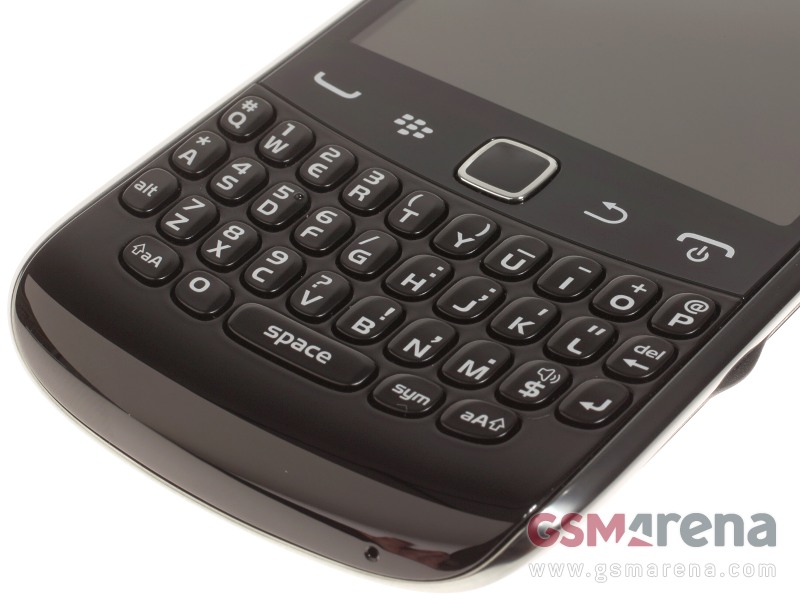Unveiling BlackBerry Curve 9360 Specs Pricing Pros & Cons

Introduction to BlackBerry Curve 9360
The BlackBerry Curve 9360, launched in August 2011, represents one of the key devices that kept Research In Motion (RIM), now known as BlackBerry Limited, relevant in the competitive smartphone market. During its time, the Curve 9360 offered a blend of functionality and affordability that attracted a variety of users, including business professionals and tech enthusiasts. Despite being discontinued, it still holds a place in the history of mobile technology thanks to its distinctive design and feature set. This article delves into the device's specifications and its significance in the broader context of smartphone development.
Design and Build
The BlackBerry Curve 9360 was designed with portability and ease of use in mind. Weighing only 99 grams and measuring 109 x 60 x 11 mm, it was a compact device, easily fitting into the palm of a hand or a pocket. The device retained the classic BlackBerry QWERTY keyboard, facilitating quick and efficient typing, which was ideal for email-heavy users. With its Mini-SIM support, the phone was built for practicality in an era when micro SIM was not yet the standard.
Display
The device featured a 2.44-inch TFT display with a resolution of 480 x 360 pixels, translating to a pixel density of approximately 246 PPI. While not competitive by today’s standards, this display was considered sufficient for its time, providing clear and vibrant visuals. The modest screen size contributed to the device's overall compactness.
Hardware and Performance
Under the hood, the Curve 9360 was powered by an 800MHz processor, coupled with 512MB of RAM. Although basic by current measures, this configuration was powerful enough for performing routine tasks such as browsing, emailing, and messaging. The device came with 512MB of internal storage, expandable via a dedicated microSDHC slot, which allowed users to store additional media and applications.
Camera
BlackBerry equipped the Curve 9360 with a 5MP rear camera, accompanied by an LED flash, capable of recording 480p videos. This camera setup enabled users to capture decent photos and videos, primarily for personal use and social sharing. However, the lack of a front-facing camera was a limitation for users interested in video calls or selfies.
Operating System and Software
Running on BlackBerry OS 7.0, the Curve 9360 offered improved speed and functionality compared to its predecessors. The system was efficient for multitasking, supporting a variety of applications tailored for productivity and communication. BlackBerry's emphasis on security and reliability was a strong selling point for business users.
Connectivity and Networking
Connectivity options for the Curve 9360 included Wi-Fi 802.11 b/g/n, Bluetooth 2.1 with A2DP, and NFC support, which was ahead of its time for facilitating contactless payments and quick Bluetooth pairings. The device supported GSM and HSPA networks, providing reasonable data speeds for browsing and streaming.
Battery Life
The phone was powered by a removable 1000mAh Li-Ion battery, which offered stand-by time of up to 336 hours on 2G networks, and up to 288 hours on 3G. Talk time was approximate 5 hours on both 2G and 3G. Additionally, the Curve 9360 allowed for music playback of up to 25 hours, catering well to music enthusiasts.
Audio and Multimedia
The BlackBerry Curve 9360 featured a loudspeaker and a 3.5mm headphone jack, allowing users to enjoy listening to music or connecting their devices to external audio systems. The audio quality was adequate, with voice and ring sound levels providing clarity in different environments.
Physical Features and Additional Specifications
Available in several colors, including black, purple, and pink, the Curve 9360 catered to a range of aesthetic preferences. It had a practical design, with a robust feel despite its light weight. Although dated by today’s standards, it was a modern and stylish device during its release.
Market Performance and Legacy
The BlackBerry Curve 9360 found a good reception among businesses and individuals who sought a reliable communication device that combined style with functionality. It marked one of the last successful product lines before BlackBerry’s decline, caused by the rapid advancement of iOS and Android platforms. Today, it serves as a nostalgic piece for enthusiasts and highlights a remarkable period in mobile device history.
Key Features of BlackBerry Curve 9360
- Compact and lightweight design, weighing only 99 g (3.49 oz)
- Equipped with a QWERTY keyboard for easy typing
- Runs on BlackBerry OS 7.0 with an 800MHz CPU for reliable performance
- Support for GSM/HSPA network technology
- 2.44-inch TFT display with a resolution of 480 x 360 pixels (~246 ppi density)
- 5 MP main camera with LED flash, capable of 480p video recording
- Expandable storage via microSDHC card slot
- Includes Wi-Fi 802.11 b/g/n and Bluetooth 2.1, A2DP connectivity
- GPS and A-GPS for navigation, along with NFC capability
- Removable 1000 mAh Li-Ion battery with up to 5 hours of talk time
- 3.5mm audio jack and loudspeaker
- Available in multiple colors: Black, Purple, and Pink
BlackBerry Curve 9360 Disadvantages
- Discontinued status limits support and future updates.
- Small screen size of 2.44 inches with low screen-to-body ratio (~28.2%).
- Low resolution for video recording at only 480p.
- Lacks a front-facing (selfie) camera.
- No FM radio feature.
- Limited internal memory of 512MB RAM.
- Older Bluetooth version 2.1 which might not support all modern peripherals.
- Limited processor speed at 800MHz, potentially affecting performance with demanding applications.
- No advanced sensors for a more enhanced user experience.
- Battery life may not be sufficient for heavy users, with only up to 5 hours talk time.























View Also
More Phones
All Rights Reserved +14266 Phones © Mobilawy 2025

























